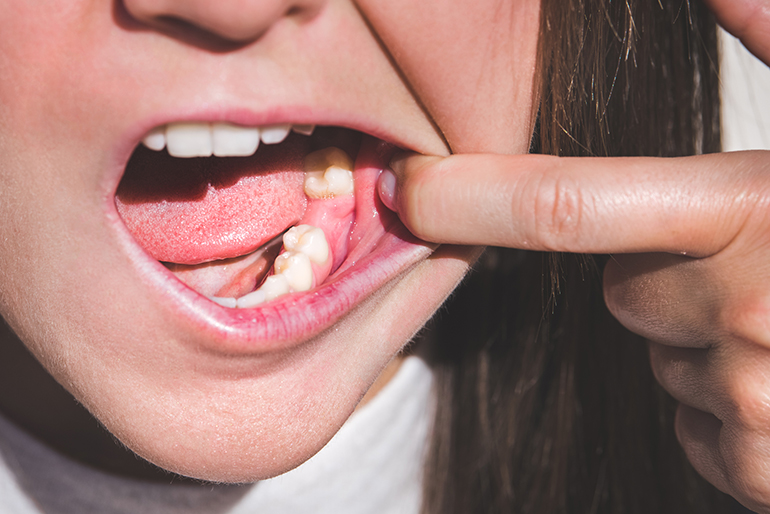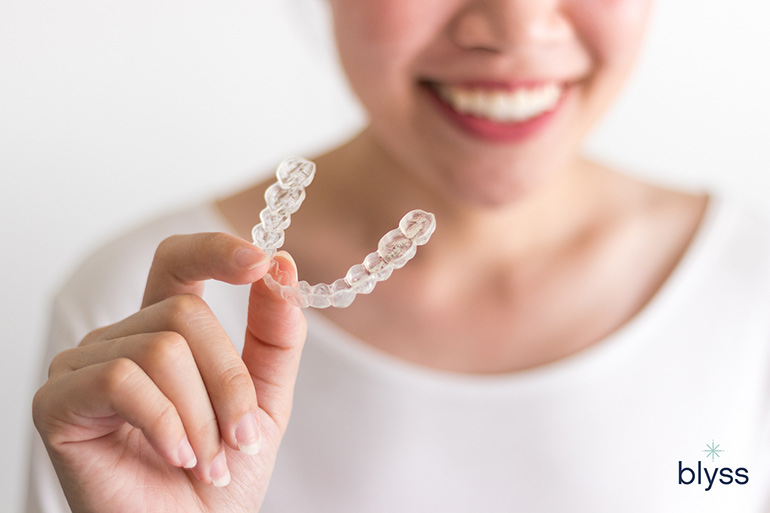Having a missing tooth can be a headache for anyone. Besides, maintaining a perfect smile with shiny teeth is most people’s goal. Unfortunately, tooth loss can interfere with your oral health and affect your smile.
Moreover, a missing tooth can have a serious impact on your aesthetics and your oral health. Even if it is a molar in the back of your mouth, losing it can affect your oral health balance. Also, having a missing tooth can result in a series of issues that you must treat.
Luckily, there are plenty of solutions to tooth loss, and all it takes is a few visits to your dentist. If you’re hesitant about your missing tooth replacement options in Del Mar or San Diego, I’m here to help you.
In this article, I’ll be reviewing all you need to know about tooth loss, its consequences, your treatment options, and much more.
What Causes Tooth Loss?
Tooth loss can affect anyone at any given time, regardless of their age and gender. Besides, many reasons can lead to tooth loss. The most frequent include:
Cavities:
One of the most common reasons for tooth loss is cavities. They begin as small lesions. But, dental cavities, or caries, continue to progress. They may cause extensive damage to your teeth, especially when left untreated.
If caries affected your crown or the visible part of the teeth, a root canal and a prosthetic crown could save your teeth. Yet, I would need to check the tooth’s integrity to determine if it is a viable option.
But once the damage reaches the roots and the cavity is deep, the only option is to perform a tooth extraction.

Dental cavities, also known as caries, may lead to tooth loss if left untreated.
Gum disease:
A frequent condition among people is gingivitis, also known as gum disease. Like cavities, the disease progresses when left untreated and causes further damage.
In this case, it turns into periodontitis which destroys the tissues surrounding the tooth. Without any support tissues, the tooth loosens and results in it being missing.
Tooth fracture:
Dental trauma can occur when you hit your teeth while falling or in a car accident. Moreover, it can even happen while eating something hard or practicing sports. These incidents can induce fractures, and they can also lead to a missing tooth.
Usually, using composite resin or a dental crown can restore fractures. But, in some cases, the fracture is so extensive that it involves the root. This leaves no option but to extract the tooth.
Tooth fracture is also the most frequent reason for missing teeth in children.
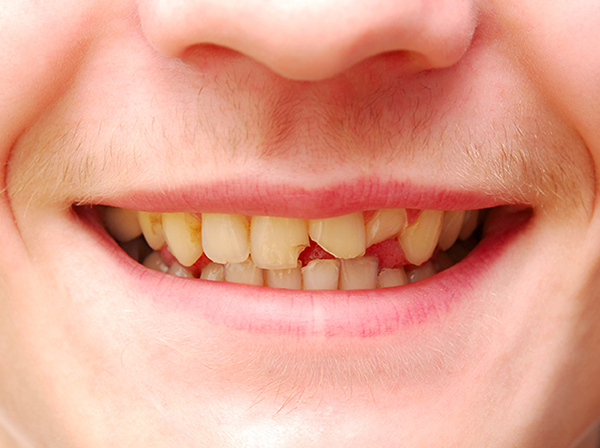
Depending on the severity, tooth fracture can also be a reason for missing teeth. This is especially if the fracture reaches the root of your tooth.
Why should you never ignore a missing tooth?
No matter which tooth is missing, losing one or many teeth triggers a series of events. These events can affect your oral health and self-esteem.
The mouth is a complex system. While you eat, you apply many forces to your teeth and other tissues. Sometimes at different angles and intensities. Your mouth’s design distributes these biting forces evenly to prevent any damage.
But, a missing tooth interferes with this balance. It damages different oral tissues, such as the teeth, bone, and TMJ (Temporomandibular joint).
The damage can go unnoticed at first. But as it progresses through time, it can make you develop painful symptoms. It can also make your case more complicated and may need more complex treatment.
Stages of tooth loss
Tooth loss affects your bone and other teeth on the dental arch.
A series of processes occurs in your mouth after losing a tooth. These processes impact your oral health and the way your mouth functions.
We can divide into stages the changes you undergo after losing a tooth. We use different characteristics and events to mark these stages. This helps you have a better understanding of the complete process.
In this section, I will describe how these stages develop after losing a tooth. But, you must understand that this process goes from the mild to the most severe consequences.
Stage 1 – Immediate loss
This is the first stage after tooth loss. These consequences are immediate or almost immediate and easy to identify.
The most common immediate effects of tooth loss include:
Bone loss
Bone resorption, or bone loss, begins immediately after losing a tooth.
To explain this, you must know that every bone in your mouth needs stimuli to grow correctly. Without it, the bone gets weaker and smaller. Thereby, this process is what we call bone resorption.
Once you lose a tooth, your bones stop receiving the essential stimuli required to continue growing. In short, like your muscles that lose size when you stop exercising, the same happens to your bone.
Loss of self-esteem
As we live in a society where looks are highly relevant, a missing tooth can affect your self-esteem.
Having an empty spot in your smile can drastically change the way you look. This can interfere with your ability to socialize, self-image, and self-esteem. Sometimes, patients might want to hide their smiles to prevent people from knowing they have a missing tooth.
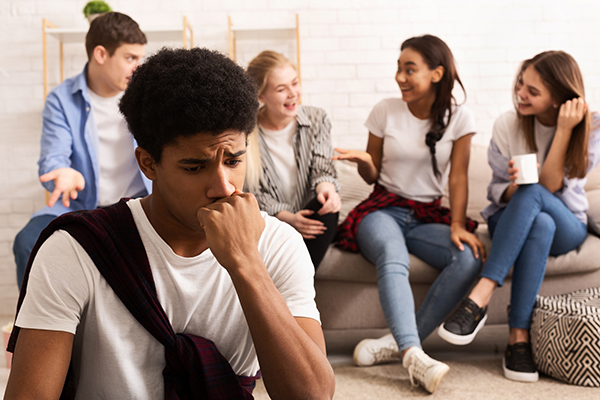
Losing a tooth, especially the front ones, can affect how you socialize.
This can make you have negative ideas about yourself and your looks. It can also make you feel bad while developing low self-esteem problems.
I once treated a patient who suffered a bike accident and lost all his front teeth. He wouldn’t show up in public for any reason until he got convinced to have his dental implants. It was a life-changing experience.
Speech problems
You need to hold or place your tongue against your teeth to produce specific sounds and noises while speaking. For example, when pronouncing the letters D and T.
Losing a tooth, especially a frontal one, can interfere with your ability to pronounce certain words. As such, they can sound weird or different, resulting in speech problems.
Two factors determine the severity of these speech problems. These include:
- The number of missing teeth
- Their position on the dental arch
Chewing problems
Normally, we chew food evenly around both sides of the mouth. Each group of teeth has its particular function in the eating and chewing processes.
But, we lost this balance when there is a missing tooth because it is more challenging to eat on one side than the other. Also, the problem gets aggravated when many teeth are missing. It can even make you use teeth for a function they are not designed for, such as chewing with your frontal teeth.
Not being able to chew your food properly can turn into digestive problems and malnutrition. This happens because the body can’t extract as many nutrients from the food as it should if it is not chewed well enough.
Stage 2 – Ignored tooth Loss
The second stage begins after a few months without receiving any treatment. In this group, the issues are more related to the teeth than other aspects.
Shifting of teeth
Your teeth are designed to be in constant contact with the ones next to them on the arch. They are also designed to meet their tooth counterpart on the opposite dental arch when the bite is fully engaged.
Thereby, the teeth next to the empty gap start shifting and moving, searching for the lost contact when there is a missing tooth. So, the tooth on the opposite arch will eventually migrate and extrude, trying to find contact.
These changes in the teeth’ position begin as a subtle movement that can even be hard to notice. But, after enough time has passed, the shifting becomes more and more noticeable. Sometimes, it can even get to a point where the tooth takes an entire odd angle and position. I will explain this matter in detail a bit later.
Gum problems
As the bone defect becomes more apparent, it could also affect the gum over it.
Bone resorption can lead to receding gums on the adjacent teeth. Also, in tooth loss cases, periodontal disease can occur when you don’t have a good oral hygiene routine.
Moreover, receding gums can cause tooth sensitivity as the roots get exposed to the oral cavity. Unlike your teeth’s upper part, the cementum covers the roots instead of enamel. This hard tissue is less protective against external stimuli, which leaves the tooth susceptible.
Bite collapse
After a while, the bite collapses. Finally, after the teeth have shifted, malocclusion develops.
Malocclusion is a term used to describe misaligned teeth. It can have many reasons, classifications, and treatments. It also usually leads to several oral health problems.
Different symptoms can occur when you have misaligned teeth. Moreover, the severity of these symptoms can vary depending on the position of the teeth.
On some occasions, it will not cause any discomfort. But, malocclusion can make you bite your cheeks or tongue. It can further increase the speech problem caused by tooth loss. In severe cases, it can produce pain or discomfort every time you bite something.
At our San Diego clinic, I have encountered many cases of severe malocclusion due to dental loss. Sadly, some patients do not even know what is happening until the damage gets bigger. Fortunately, our team has managed to rehabilitate every single case.
Here’s a piece of advice, do not leave it for later. Fix your smile today!
Increased treatment cost
There are usually no major complications when you get tooth replacement soon after tooth loss. But, the treatment can be more complex. Especially if you have it after a long time has passed.
This is because you have to treat the long-term effects of tooth loss to restore the missing tooth. As a result, they also increase treatment costs, as more procedures may be required.
Stage 3 – Longer-term tooth loss
The following effects develop after a long period without replacing a missing tooth. These consequences migrate from the teeth and adjacent tissues to elements farther away from them.
Wear on other teeth
The anatomy of the teeth allows them to withstand biting forces without harm.
Yet, the enamel can wear out after the teeth shifts and receive biting forces at odd angles. This can alter the shape of the tooth, wear out cusps, and in some cases, cause pain and sensitivity.
Difficulty to fix with regular bridges or implants
There are many treatment options for a missing tooth. But, after long periods, more treatments are usually needed to ensure the restoration’s success. This increases the difficulty and complexity of the case.
These treatments may include:
- a bone graft to achieve optimal properties for the dental implant placement
- orthodontic treatment to align the teeth back before placing the dental bridge
TMD
Temporomandibular Joint Disorder (TMD) is a group of conditions that affect the joint connecting your jaw bone to your skull (TMJ).
They can develop after you lost the balance in your mouth due to a missing tooth. This causes excessive forces and pressure on the joint. These forces hurt the TMJ resulting in symptoms such as:
- pain or discomfort;
- clicking or popping noise when opening or closing the mouth;
- and, even locking the jaw in an open position.
Change of facial features
The last consequence of tooth loss is facial feature changes.
The teeth act as a support to the facial muscles around the mouth. Missing multiple teeth can lead to muscle tonicity loss, collapsing the lips inward as the support is missing.
Furthermore, the facial features will change according to the missing teeth. These changes can range from forwarding chin rotation to decreasing the angle at the corner of the lips.
Overall, they make you look older than you are.
How to fix a missing tooth
Currently, there exist many treatment options for a missing tooth replacement, such as:
Dental implants:
Dental implants have become the gold standard in replacing missing teeth. This treatment consists of placing a screw inside the bone that acts as a root to fix a dental crown on top.
Although this option is more expensive and takes more time, the result is a restoration that feels like a natural tooth.
Dental bridge:

A dental bridge is a more classical approach to replacing a missing tooth. In this case, two crowns fixed at both ends of the bridge support the crown replacing the tooth. Each one is permanently cemented to both teeth next to the empty gap.
Dentures:
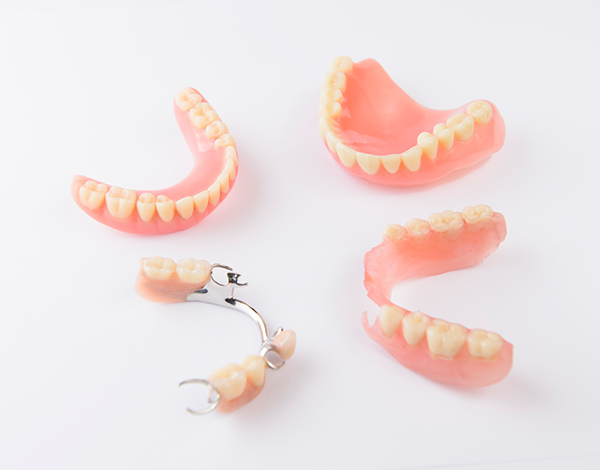
Another alternative is dentures. Unlike a dental bridge or dental implant, dentures replace a complete dental arch. Also, they can be freely removed by the patient at any given time. Furthermore, patients should also remove them at night before going to sleep.
Regardless of the alternative chosen, you can achieve great results. That is as long as the case has been thoroughly evaluated and designed.
Make sure to check out our service page and find out all the alternatives you have for your treatment.
How to prevent tooth loss
Tooth loss is an unfortunate event that you can prevent with traditional oral care.
Brushing your teeth twice a day and flossing at least once will help prevent cavities. Cavities could harm your teeth and gum disease that could affect the bone.
Accidents and trauma are uncontrollable events. Wearing protection such as splints if you play sports can help prevent a fracture that could end up in tooth loss.
Periodic dentist appointments will also help ensure that there will be no issues with your oral health.
The takeaway
Tooth loss affects your life in many ways. Consequences can be imperceptible at the beginning. But, they become more obvious and complex as time passes.
Waiting to solve your problem only makes it worse and more expensive. As I explained in this article, a missing tooth can have different consequences, such as:
- Tooth shifting
- Self-esteem issues
- Speech problems
- Bone defects
- Gums disease
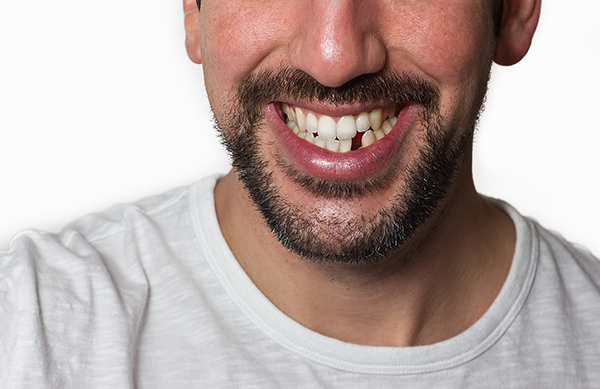
There are many options to address missing teeth. Make sure to discuss the alternatives with your dentist to achieve the best results.
Luckily, there are many treatment options with successful and natural results. Maintaining good oral health can help you keep your teeth, no matter where you are.
Learn more about how to fix your missing teeth by booking a consultation with us. If you are in Del Mar or San Diego, you may also drop by our dental office to talk about your questions about missing teeth.
References:
- Bodic, F., Hamel, L., Lerouxel, E., Baslé, M. F., & Chappard, D. (2005). Bone loss and teeth. Joint Bone Spine, 72(3), 215–221. https://doi.org/10.1016/j.jbspin.2004.03.007
- Burke, D. (2021, February 18). Malocclusion of the teeth. Healthline. Retrieved May 22, 2022, from https://www.healthline.com/health/malocclusion-of-teeth
- Cafasso, J. (2017, May 23). Periodontitis: Symptoms, causes, and treatments. Healthline. Retrieved May 22, 2022, from https://www.healthline.com/health/periodontitis
- Colgate. (n.d.). Bone Resorption: Colgate®. Bone Resorption | Colgate®. Retrieved May 22, 2022, from https://www.colgate.com/en-us/oral-health/mouth-and-teeth-anatomy/bone-resorption-why-it-happens-and-what-to-do-next
- Craddock, H. L., Youngson, C. C., Manogue, M., & Blance, A. (2007). Occlusal changes following posterior tooth loss in adults. part 2. clinical parameters associated with movement of teeth adjacent to the site of posterior tooth loss. Journal of Prosthodontics, 16(6), 495–501. https://doi.org/10.1111/j.1532-849x.2007.00223.x
- Dunkin, M. A. (2020, September 13). Tooth extraction (having a tooth pulled): Procedure, recovery, aftercare. WebMD. Retrieved May 22, 2022, from https://www.webmd.com/oral-health/guide/pulling-a-tooth-tooth-extraction
- Frothingham, S. (2018, June 13). Dental bridge: 4 types, benefits, use case, and costs. Healthline. Retrieved May 22, 2022, from https://www.healthline.com/health/dental-bridge
- Gotter, A. (2019, March 8). Jaw popping: Causes and treatments. Healthline. Retrieved May 22, 2022, from https://www.healthline.com/health/jaw-popping
- Mayo Clinic. (2022, March 19). Cavities/Tooth Decay. Mayo Clinic. Retrieved May 22, 2022, from https://www.mayoclinic.org/diseases-conditions/cavities/diagnosis-treatment/drc-20352898
- Saintrain, M. V., & de Souza, E. H. (2011). Impact of tooth loss on the quality of life. Gerodontology, 29(2). https://doi.org/10.1111/j.1741-2358.2011.00535.x
- Seladi-Schulman, J. (2020, July 30). Tooth decay stages: 5 stages and how to treat each. Healthline. Retrieved May 22, 2022, from https://www.healthline.com/health/dental-and-oral-health/tooth-decay-stages#pictures
- Singh, K. A., & Brennan, D. S. (2012). Chewing disability in older adults attributable to tooth loss and other oral conditions. Gerodontology, 29(2), 106–110. https://doi.org/10.1111/j.1741-2358.2010.00412.x
- Whelan, C. (2021, May 3). Dental implant procedure: What to know. Healthline. Retrieved May 22, 2022, from https://www.healthline.com/health/dental-and-oral-health/dental-implant-procedure
